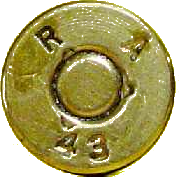Ysterhout Dot Net
Why cast bullets ?
In summary, you can shoot a lot more for the same amount of money.
Before you continue, this is a "why to cast" , not a "how to cast" .
For detailed instruction on the how of bullet casting, FortuneCookie45LC has documented years of casting experience in his YouTube videos, so look him up, and every bullet caster should bookmark castboolits.gunloads.com.
Back to the story.
Here, CMJ bullets are bought in bulk at the beginning of the year, for the year's shooting, and then an additional top up quantity towards the end of the year depending on how much time is spent on the range.
Lead bullets for reloading was never a consideration, because handling lead gets it on your fingers, and lead is hazardous if accidentally ingested. It's not practical to wear gloves while reloading.
At the end of last year the inventory check of how many CMJ bullets there were, and how many would need to be ordered, resulted in a calculation on how much the order would cost. It was high enough to consider alternative sources of bullets to try lower the cost. The only way to lower the cost would be to buy lead bullets, which surprisingly , are 80% of the cost of CMJ.
80% of a lot of money is still a lot of money, and a 20% saving to deal with the hassle of handling sticky lead bullets wasn't going to swing it.
Casting looked like a viable option , doing the math based on what equipment would cost , and the price of lead scrap, and conditional on the sticky lead bullet issue being overcome.
The numbers said that for the price of one year's CMJ bullets, new equipment could be bought to cast for the handgun calibers the CMJ's are normally bought for. This included Lee six-cavity moulds for each caliber, handles, a hardness tester, lube and sizing dies.
After year one, the casting costs would be reduced to the price of scrap lead and the LPG gas to melt it.
For example :
- 50kg / 110 pounds of lead scrap costs R 1000.00
- There are 15432 grains per kilo
- A kilo makes around one hundred and twenty 124 grain bullets
- 50kg of lead makes 6000 bullets
- 1000 124gr CMJ bullets cost around R 1200
- The price of the lead can buy 1250 CMJ bullets, or make 6000
In this scenario, the CMJ costs 120c . The cast bullet costs 16c .
The most expensive reloading component is the bullet, so the cost saving per round for 9mm is 87% of the cost of the CMJ bullet.
If the cost of powder is 16c per round, and the primer 50c, then the cost of a cast reload is 82c versus 186c . Roughly 44% .
The cost saving percentage is greatly affected by the price of primer, the cheaper the primer the greater the saving overall.
That was the deciding factor to try casting - shoot more for the same amount of money, and twice as much counts as a lot more.
And big bonus if any lead scrap is found for free, with a sweet deal on bulk primers.
To avoid the issue of contamination by handling lead bullets, there are coatings that can be applied to the lead bullet that effectively seal the surface, preventing lead transfer to bare fingers when handling. The simplest coating is Lee Liquid Alox, followed by 45-45-10, and an alternative popular choice these days is powder coating.
My choice of coating for subsonic velocities is 45-45-10 ; 45% LLA, 45% of a carnauba containing wax and 10% mineral turentine. I chose this because LLA on it's own is reported by many to remain tacky, and the 45-45-10 dries to a hard film, so you can handle the bullets with bare hands and not get any lead residue on your fingers.
FortuneCookie45LC has produced excellent instruction for making 45-45-10, so look him up for that.
One of the intructional videos by FortuneCookie45LC explains why the ingot casting is best done seperately from the bullet casting.
Further searches showed that ingot casting is preferably done with bigger melters than the Lee 10 or 20-pound pot, leading me to try making my own.
 Why Cast your Own
Why Cast your Own


